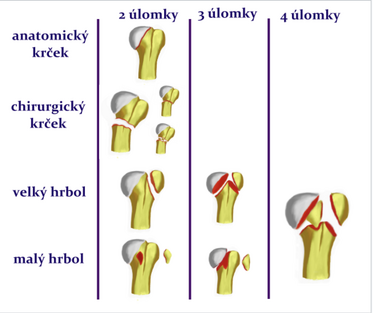Neer's Classification
Neer's classification = the most widely used classification of fractures of the proximal humerus . It divides fractures on the one hand by the number of fragments into 2, 3, and 4 fragments, on the other hand by dislocation and the course of the fracture line.
The basic fragments are the large and small tuberosity , the head fragment and the diaphyseal fragment . The basic division separates I.–IV. groups :
- Group I - non-dislocated fractures (or with a slight dislocation), mainly two-fragmented (head or one of the humps);
- II. group − dislocated two-fragment fractures;
- III. group − three-fragment fractures (head with one of the bumps; both two bumps);
- IV. group - four-fragment fractures.
A complete classification is created only by combining individual fragments in individual groups.
The expansion of the classification also takes into account anterior or posterior dislocation and defects of the articular surface.
Links[edit | edit source]
Related articles[edit | edit source]
- Fractures of the humerus
- Humerus
References[edit | edit source]
ŽVÁK, Ivo. Traumatology in diagrams and X-ray images. 1st edition. Prague: Grada, 2006. ISBN 80-247-1347-0 .

